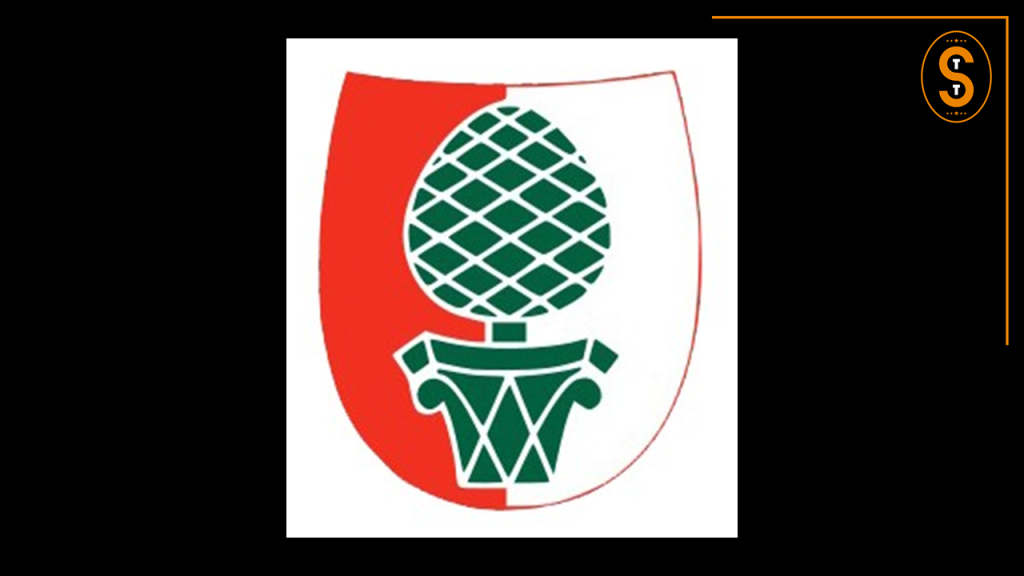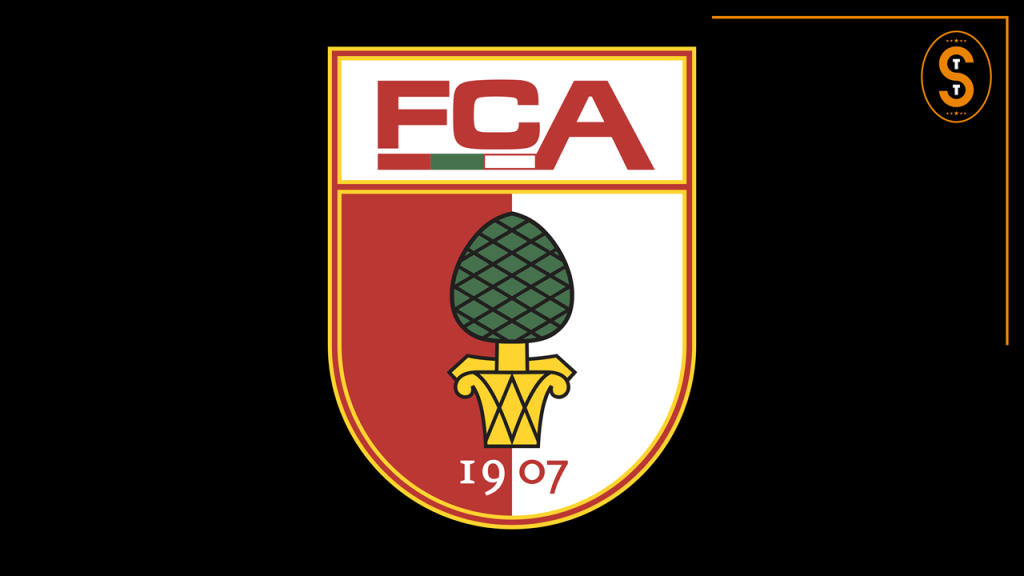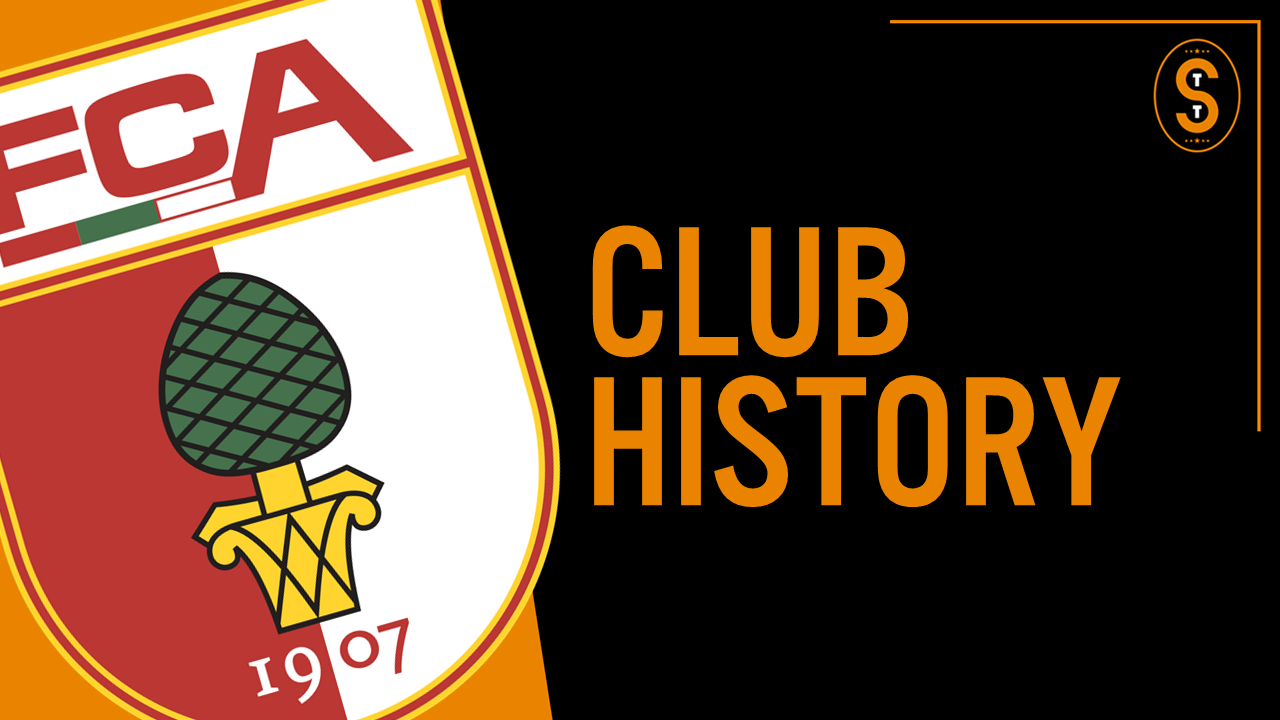Welcome to the Soccer Tavern, where we’re discussing the history, philosophy, and culture of the beautiful game. My name is Dave and in this video, we’re talking about the history of Fußball-Club Augsburg 1907 e. V., better known as FC Augsburg. Pull up a seat and let’s start the discussion.
FC Augsburg is located in the southern part of the city of Augsburg. Augsburg is located in the southern, central part of Germany. The club currently play in the Bundesliga and its home ground is called the WWK Arena. The stadium opened in 2009 and holds about 31K people.
Origin
Sometime around 1906 or early 1907, a group of men began playing soccer periodically on the Großer Exerzierplatz in Augsburg. The Großer Exerzierplatz basically translates as large field. Over the course of the year, more and more men kept showing up to play, so on August 8, 1907, a club was officially formed named FC Alemmania. Alemmania is the ancient name for an area, which is in present day Germany that includes the city of Augsburg.
The club’s first president was Fritz Käferlein.
In 1909, the club merged with another local club named TV 1871 Augsburg and moved its home ground.
By 1914, the club joined the German Football Association.
The club had another name change in 1919, before merging with another club in 1969. As a result of this final merger, the club officially became its current name of Fußball-Club Augsburg 1907 e. V.
Nickname
The club’s nickname is die Fuggerstädter. That translates as the residents of the Fugger city. It’s also a general nickname for people from the city of Augsburg. The Fugger family was a prominent business and mercantile family from Augsburg during the Renaissance time period. The family helped build and develop many things in the city hence the nickname.
Crest
Let’s take a look at Augsburg’s crest now.

Most of its elements are derived from the city’s coat of arms. The red & white shield, along with the pine cone comprise the city’s coat of arms. The red & white colors go back as far as the 14th century and are attributed to the Bishop of Augsburg & the Duke of Swabia.
The pine cone is a symbol of the Holy Roman Empire. The city of Augsburg was founded in 15 BC by emperor Caesar Augustus of the Holy Roman Empire. That’s also where the city gets its name. Augustus=Augsburg. The city was then a part of the Holy Roman Empire for many years, thus the Holy Roman Empire symbol of the pine cone being included.

Circling back to the FC Augsburg crest, the other elements should be straightforward.
The FCA at the top stand for Fußball-Club Augsburg.
The red, green, & white rectangles are the club’s official colors and are the colors of the city’s coat of arms.
And finally the year of 1907 is written at the bottom as that is when the club was officially founded.
Important Events
1 – Unfortunately, I couldn’t find the exact date, but in May or June of 1973, FC Augsburg played Herzogenaurach FC in the final match of the Bayernliga season. FC Augsburg was in a tight title race with ESV Ingolstadt who were playing on the road that day. FC Augsburg prevailed 3-1 in their match, while Ingolstadt lost 2-0. The result meant Augsburg were Bayernliga Champions and were promoted back to professional soccer for the first time since the club’s merger in 1969. 15,000 supporters flooded the pitch to celebrate the promotion. If you have more details about the exact date, please let us know in the comments section.
The next event I want to highlight happened in the summer of 2000. FC Augsburg had just completed the Regionalliga Süd season in 8th place, securing their place in the division from a sporting perspective. Unfortunately, the club was in a bad financial position and was negotiating with the DFB for its playing license to remain in the division. The DFB ultimately denied Augsburg their playing license after the club’s main investor couldn’t guarantee 3M Deutsch Marks. The club was then relegated to the 4th tier for the first time in its history. Fortunately, the club quickly found a savior in an investor group fronted by Walther Seinsch that set them on their current path, but the summer of 2000 was one of the darkest times in the club’s history.
3 – And the final event I want to discuss happened on May 8, 2011. On this date, FC Augsburg hosted FSV Frankfurt in the second to last match of the 2. Bundesliga season (2nd division). The match was tied 1-1 late in the game. Michael Thurk took a corner for Augsburg that sailed to the back post for Stephan Hain to finish in the 85th minute. That gave FCA a 2-1 victory and secured promotion to the Bundesliga for the first time in the clubs’ history.
Supporters
Since 2007, the Supporters-Club 1907 has represented the supporters of Augsburg. The organization has created Tifos and coordinated chants/songs amongst the fans. The supporters club also serves as representation for the supporters when communicating with the club, media, police, and league.
Noteworthy Players
There aren’t many legendary careers with FC Augsburg but there are prominent players that have played for Augsburg over the years.
Helmut Haller, nicknamed der “Blonde Engel” (or the Blonde Angel), began his professional career in 1957 with BC Augsburg (which was one of the 2 clubs that merged to form FCA in 1969). Haller played with Augsburg for 5 years before being transferred to FC Bologna in Italy where he became the first ever German player to play in Italy. In Italy, he became the first foreigner to be named Footballer of the Year in Italy and had a very successful club and international career before returning to FCA in 1973 where he basically ended his career.
Bernd Schuster began his youth soccer career with SV Hammerschmiede Augsburg in 1971 and joined FC Augsburg’s youth academy in 1976. Before Schuster could make a first team appearance with FCA, Schuster was signed by FC Köln, the reigning Bundesliga champions. He’d break into the starting lineup at 18 years old and would play with Köln for 2 seasons before transferring to FC Barcelona in 1980. He’d go on to have a fantastic club career in Spain at Barcelona, Real Madrid, and Atletico Madrid. During his career, Schuster won the 1980 Euros with West Germany and won 10 major club titles all in Spain.
And the final player I’d like to highlight here is Karl-Heinz Riedle. Riedle started his professional career with Augsburg in 1983. He had good performances for the club in the lower leagues and broke out in the 1985-1986 season when he scored 22 goals and earned a call up to the German U-21 team. That led to his transfer to Blau-Weiss Berlin in the Bundesliga. Riedle would go on to play for Werder Bremen, Lazio, Borussia Dortmund, Liverpool, and Fulham before he retired in 2001. He won the World Cup in 1990 with West Germany and won 3 Bundesliga titles and a Champions League in his career, which began at FC Augsburg.
Noteworthy Managers
The first manager I’d like to highlight is Armin Veh. Veh actually played for the club on 2 separate stints in his playing career before becoming manager of FCA in 1990. It was his first managerial job and he led the club for 6 seasons while it operated in the third tier of German soccer. In the 1993-1994 season, Veh led Augsburg to the Bayernliga title, but the club couldn’t advance through the promotion playoffs to the second tier. Veh would leave FCA in 1995 and return for a 1 year stint from 2003-2004. Similar to the players we discussed, Veh is more well-known for his time spent elsewhere as he won the Bundesliga title in 2007 with VfB Stuttgart. Veh managed more than 300 Bundesliga matches and more than 700 matches in total with a variety of clubs. Veh’s last managerial job ended in 2016 and he is currently Sporting Director at FC Köln.
The other manager I’d like to discuss here is Jos Luhukay. Luhukay joined Augsburg in 2009 and led the club to a promotion playoff in his first full season. Though FCA lost that playoff, the club rebounded the following year and won automatic promotion to the Bundesliga in the 2010-2011 season, which we’ve already discussed. Simply for taking the club to the first division for the first time in its history is worthy of mentioning Luhukay here. He left the club at the end of the 2011-2012 season after he helped FCA avoid relegation. He will always be remembered by Augsburg fans.
Rivals
FC Augsburg’s two main rivals are fellow Bavarian based clubs 1860 Munich and FC Ingolstadt.
The 1860 rivalry really began in 1973 when the two sides met in a second division match in Munich. Augsburg brought a much larger than expected number of travelling fans that saw an estimated 80-90,000 people watch the match. As the two cities are located relatively close together and both clubs fluctuated between the lower divisions between the 1970s and 2000s, the rivalry continued to develop. Unfortunately, 1860 has gone through some serious struggles in recent years and slid down the divisions, while Augsburg has stabilized in the Bundesliga. That has led to this rivalry slipping a bit.
Augsburg’s other main rival is FC Ingolstadt. There is a natural rivalry between the cities of Ingolstadt and Augsburg in addition to competing against each other in soccer over the course of more than 100 years. The rivalry really isn’t that intense as there haven’t been too many hostile matches to solidify this as a full blown rivalry. The matches have a slight increase in intensity between fans and players, but Augsburg’s main rival remains 1860.
Stats & Records
The stats and records we’re about to discuss are as of October 2019, which is when we are recording this video.
Augsburg has played 9 seasons in the top flight in its history.
The club has no major trophies.
FCA’s record first team appearance holder is Daniel Baier with 335 first team appearances at time of recording & he is still an active player, so he is likely to add to that tally.
The club’s record goal scorer is Michael Thurk with 56 first team goals.
Augsburg’s record transfer purchase was Martin Hinteregger from RB Salzburg in Austria on August 31, 2016 for ~€10.5M.
And the club’s record transfer sale was Abdul Rahman Baba to Chelsea FC in England on August 16, 2015 for ~€20M.
And 1 last interesting fact about the club:
In 1951, BC Augsburg opened the Rosenaustadion which was the first major sports arena built in Germany after World War II. The stadium was constructed using rubble from the war and housed the club for 58 years before it moved into its current Arena in 2009.
So there you have it… a bit of history on Fußball-Club Augsburg 1907. Let’s continue the discussion in the comments section below the video.
Thanks for stopping by the Soccer Tavern. Hope to see you again soon. Prost!
